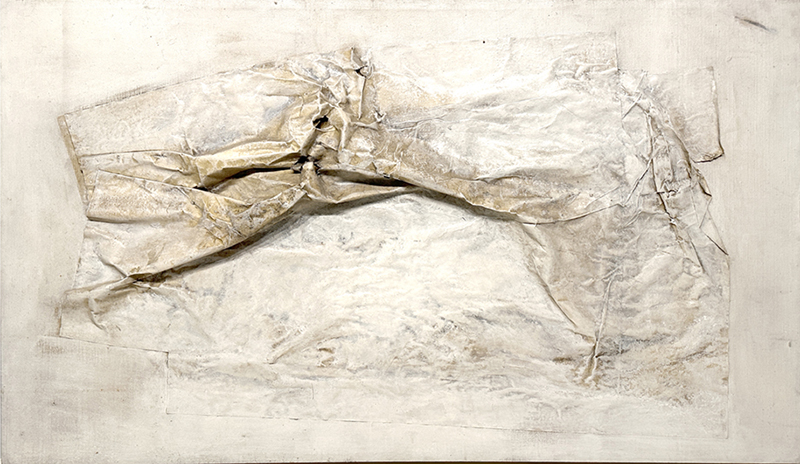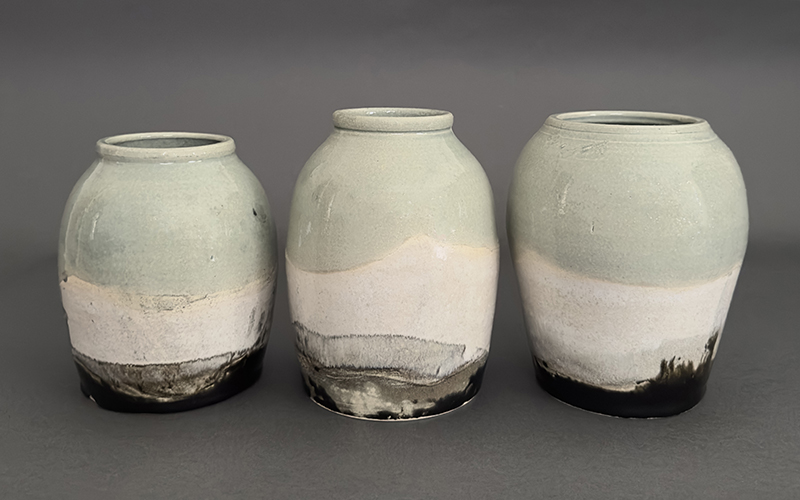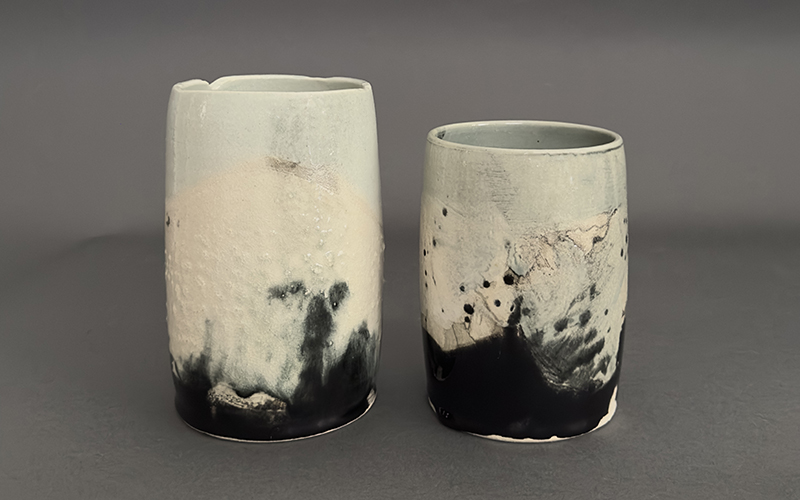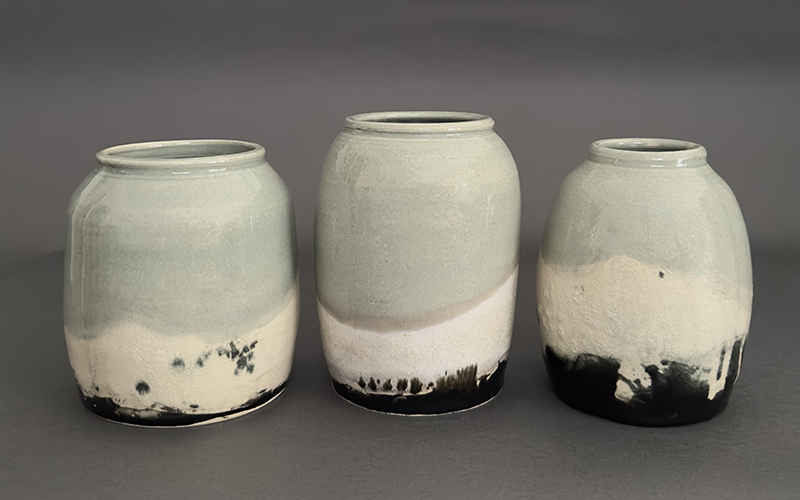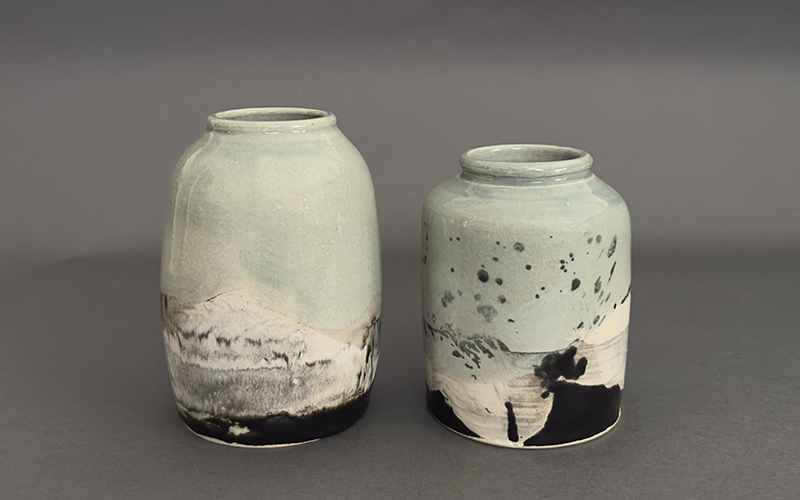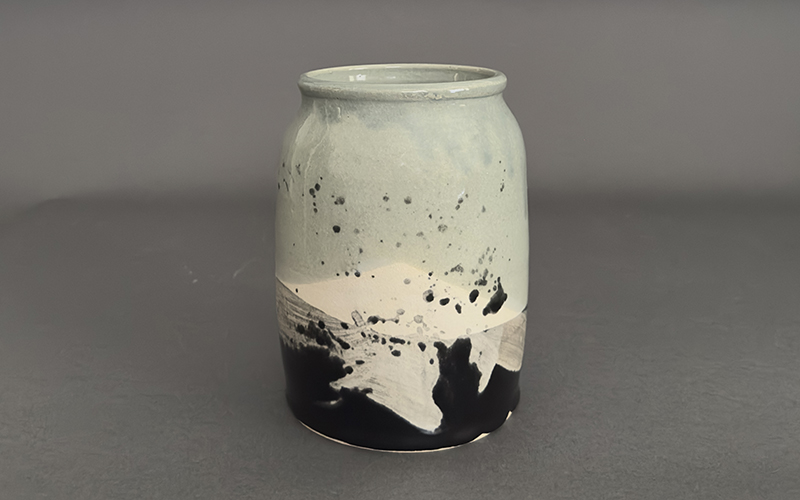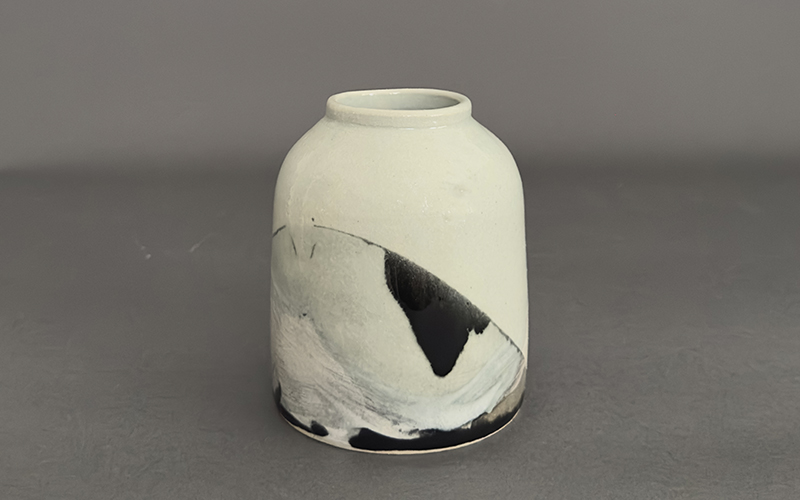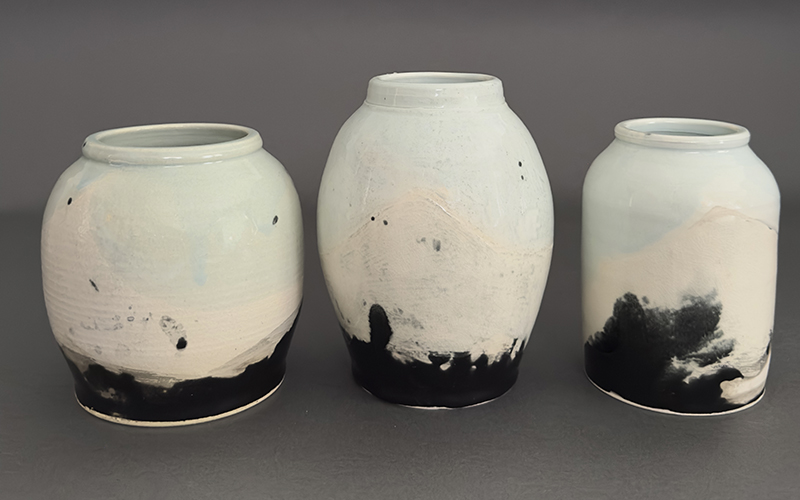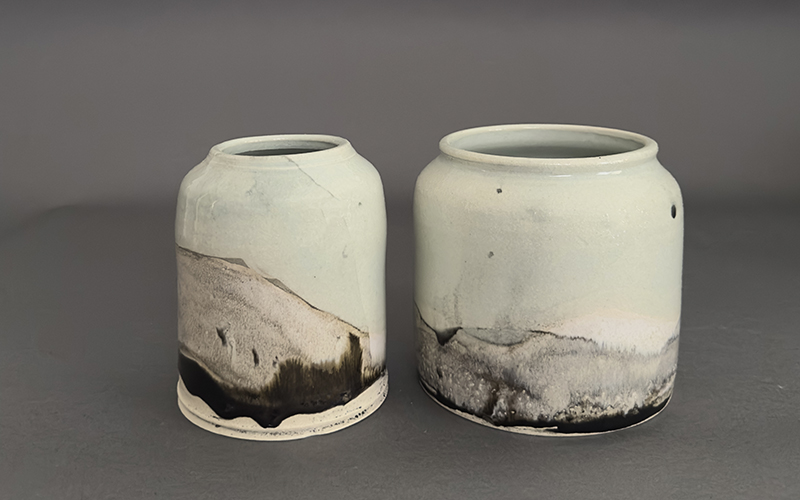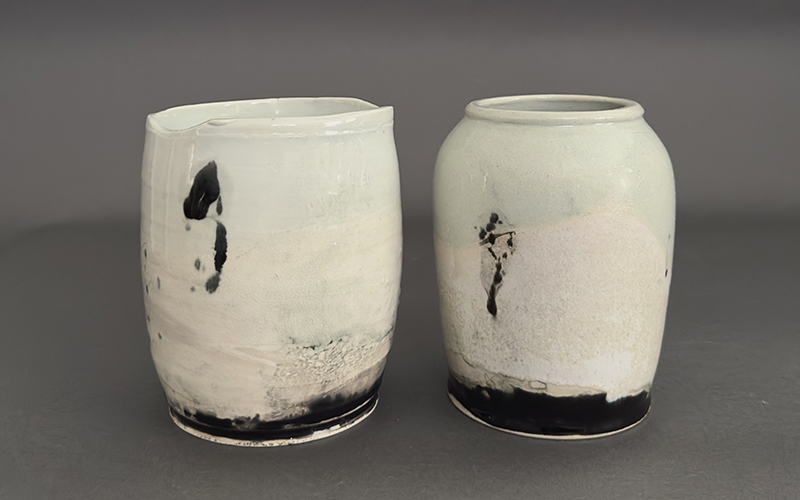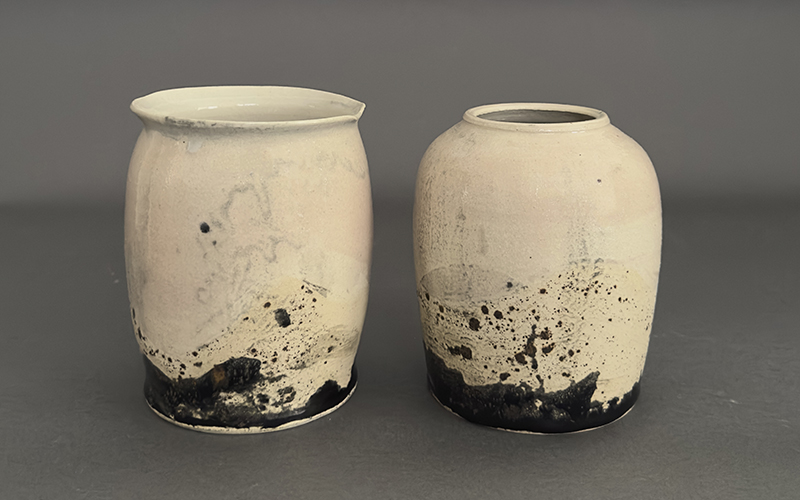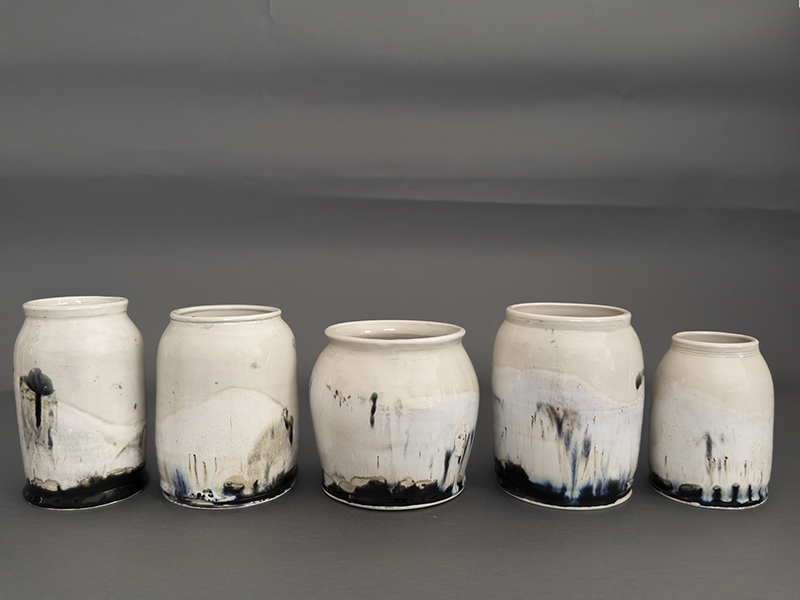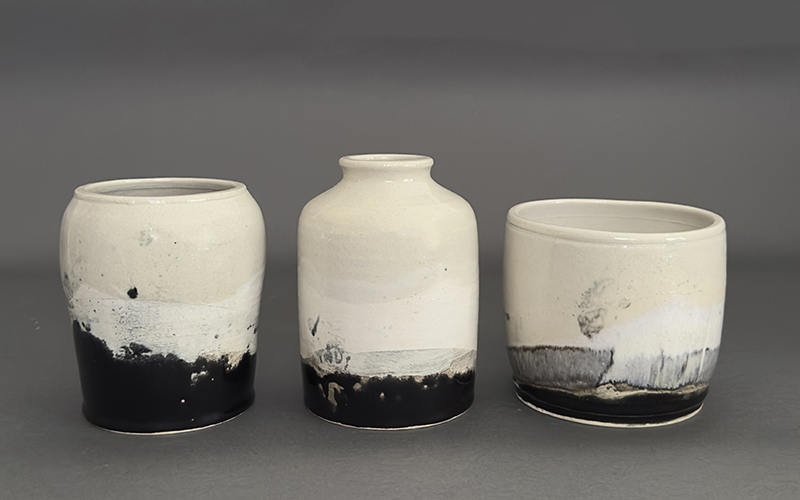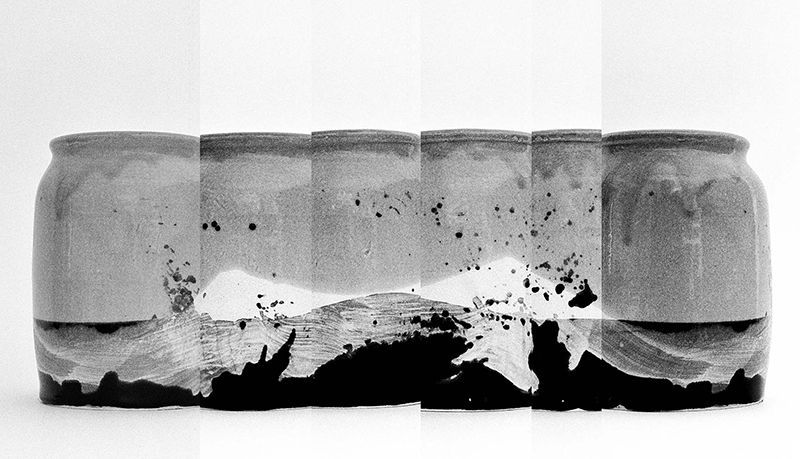August 9 – September 16, 2025
reception: Saturday, August 9, 4-6 pm
Roll Up Project is pleased to present a selection of works by Nina Zurier. Zurier’s practice spans painting, photography, and pottery, and this installation examines her ongoing interest in creating richly textured abstract landscapes.
Zurier’s work features landscapes that suggest aspects of reality while leaving space for individual interpretation and narratives. Living part of the year in Reykjavík, Iceland, she observes rugged vistas, open skylines, and vast seascapes, and brings features of the landscape into her work. Imagery may be seen variably as land, waves, fog, or something more indistinct and based in emotion. The environments are dreamlike, with familiar elements that suggest a sense of place, and a sense of un-reality.
Zurier’s work in pottery has blossomed in the last two years, forming a daily routine when she is in her Berkeley studio. She describes her glazing technique as a loosely controlled process, wherein she follows the natural movement of the glaze and adds new elements in response. The vessels are arranged in small compositions in the window on Harrison Street, forming landscapes that were not anticipated during the glazing process. Zurier’s compositions focus on spatial relationships to create the final image.
Through 50 years of creative output, the landscape has been an ongoing source of inspiration for Zurier. Landscape, 1974-1975, displayed in the window on Harrison Street, features a textured surface in muted earth tones, cream, and white that could be interpreted in a number of ways. The raised areas create deeply shaded crevices and rippling creases that draw the eye around the composition. Viewers are given space to interpret the landscape and to step into the space they envision.
The windows on Third Street feature a photograph entitled Gervi landslag/Artificial Landscape. Zurier’s ongoing interest in computer technology led her to use traditional camera work in combination with photo editing software and generative AI tools like Adobe Firefly. Gervi landslag/Artificial Landscape is a photocollage depicting a painted pot viewed from several angles, creating an extended landscape/seascape. It is a combination of several versions of reality, stitched together to form something new. Zurier’s photographs, and especially the photographic artificial landscapes she creates using digital tools, create a complementary conversation with the handmade qualities of the sculptures and paintings.
Zurier’s landscapes are less about specific places and more about our connection to the natural world, and increasing familiarity with staged realities or simulacra in the digital realm. What does it mean when something is both familiar and digitally created? And what does it mean to “make” an image in the contemporary context?
About the Artist
Nina Hubbs Zurier is a Bay Area-based artist who divides her time between California and Reykjavík, Iceland. Her work spans landscape photography and painted ceramics through her ongoing “Artificial Landscape” series.
A 1974 BFA graduate from San Francisco Art Institute, Zurier has exhibited extensively across Iceland, California, and internationally over the past decade. Recent solo exhibitions include “Infædd//Native” at Studio Sol, Reykjavík (2018), “Inn og út um gluggann” at RAMskram, Reykjavík (2017), “Gefið (það kemur ljós)” at Gallerí Skilti, Reykjavík (2016), and “Ef ég hefði verið … Reykjavík 1950-1970” at Reykjavík Photography Museum (2015). Notable group exhibitions include “Sjónarvottur/Bystander” at Berg Contemporary and “Veðrun/Weathered” at Reykjavík Photography Museum (both 2025), “Gróður” at Berg Contemporary (2020), and “A Studio In Iceland” at Anglim Gilbert Gallery, San Francisco (2015).
Her photography focuses on Icelandic landscapes using both traditional and contemporary digital methods, while her ceramic works feature paintings of imaginary Icelandic landscapes on classic porcelain forms.
Learn more about Nina Zurier on her website or Instagram.


